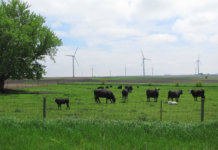The Federal Energy Regulatory Commission (FERC) has accepted a compliance filing on fixed-cost recovery policies for pricing transmission service between the Midwest Independent Transmission System Operator (Midwest ISO) and PJM Interconnection and rejected a complaint by American Electric Power Service Corp. (AEP) that challenged those policies.
The Midwest ISO and PJM, regional transmission organizations (RTOs) that extend from the Atlantic coast to the upper Midwest, filed an independent RTO pricing design proposal that would continue to use their existing inter-RTO rate design to price transmission service between the RTOs.
AEP's complaint challenged the justness and reasonableness of the rate design and advocated postage-stamp rate design for all new and existing high-voltage facilities in the combined Midwest ISO/PJM region.
‘This order helps ensure regulatory stability on cost recovery rules necessary to encourage large investments in the power grid that will be recovered over time,’ says FERC Chairman Joseph T. Kelliher. ‘Existing transmission systems were built to serve native load, so license-plate rates are appropriate in assigning those costs. When transmission systems are built to serve a broader market, broader cost assignment is appropriate.’
Under the inter-RTO rate design that the RTOs propose to continue using, the cost of existing facilities is recovered from customers within the zone where the facilities are located. The cost of new inter-RTO facilities is divided between the two RTOs pursuant to their joint operating agreement. The rate design for new facilities is important, FERC says, because it provides both incentives for construction and sufficient certainty for developers to obtain financing and build the projects.
FERC notes that it must consider a variety of interrelated factors in determining whether an existing rate design is just and reasonable. In reviewing transmission rate design within and between the two RTOs, FERC sought a reasonable balance among factors ranging from the original basis for constructing the facilities, the effect of the RTOs' planning processes, the nature of the agreements to form the RTOs, the cost impacts of the various rates designs, uses of the transmission system and the need for new infrastructure within RTO regions.



